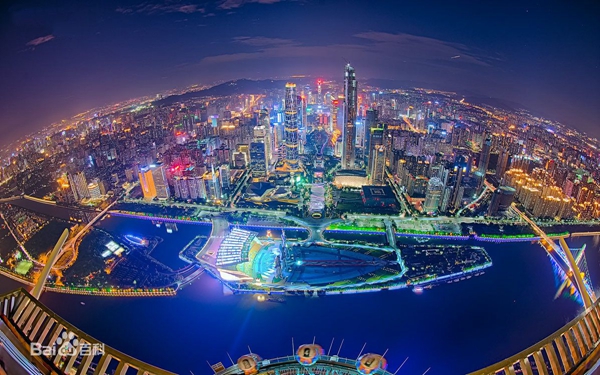8 transformation factors for Belt and Road
- By Thorsten Jelinek
 0 Comment(s)
0 Comment(s) Print
Print E-mail China.org.cn, November 7, 2017
E-mail China.org.cn, November 7, 2017
 |
|
Guangzhou, Guangdong Province [File photo] |
At the Belt and Road Forum for International Cooperation hosted by President Xi Jinping in May of this year, many foreign observers of China were overwhelmed by the unparalleled size and scope of this development program, and a few observers questioned its long-term existence altogether.
Now, as a key result of the 19th CPC National Congress, which took place on October 18-24, the BRI has even become part of the CPC's constitution and therefore a core guideline of how China wants to rule itself in relation to its close and distant neighbors.
In late 2013, the BRI started as a loosely defined series of bilateral trade agreements and existing infrastructure projects aiming to establish and enhance trade routes from China to Europe, Africa, and to the rest of Asia. However, the new constitutional foundation highlights that the BRI has been introduced by the Chinese government to prompt a profound shift in the global order towards a new multilateralism.
To implement such ambiguous developments and foreign policy agenda, the BRI focuses on five goals within a broad framework of connectivity and collaboration: policy coordination, facilities connectivity, unimpeded trade, financial integration, and people-to-people exchanges.
In a narrower sense, however, the BRI is a strategic infrastructure program of historic proportions, which includes the planning and delivery of scalable infrastructure for land and water transportation, power generation, telecommunication, and other core industries.
Beyond the Chinese government's initial projection of about US$1 trillion for infrastructure development, the BRI will require roughly US$6 trillion over the next 15 years to finance the infrastructure projects alongside the BRI countries. During that period, China plans to invest US$4 trillion in total.
This long term and large scale investment plan will only unfold if China's economy continues to grow at a steady rate. In addition, poorly planned and low-quality infrastructure investments can pose significant risks to entire economies and lock societies in unsustainable patterns of development.
Therefore, as described in detail in the framework paper, the authors propose eight transformation factors that have the potential to provide high-level stewardship to the BRI: (1) shared vision, (2) multilateralism, (3) project preparation facility, (4) risk mitigation, (5) sustainable development, (6) innovation, (7) cultural exchange, and (8) human-centric and future-ready infrastructure.
Today's lack of global governance has resulted in the absence of international development plans that are comparable to the scope and vision of the BRI. The BRI already involves 65 countries and accounts for 60 percent of the world's population and 33 percent of the global GDP.
China is willing to share its immense financial and industrial resources and capabilities as well as its four decades of experience with reform and opening-up. Without doubt, China also seeks to secure its own long-term development and global influence. The authors believe that the eight transformation factors can help to revive the spirit of "international cooperation" and "shared development," as emphasized by President Xi during his speech at the recent CPC National Congress.
The author is Europe Director at the Taihe Institute, Beijing/Berlin.
The entire paper was originally published at the World Economic Forum website on 24 October 2017 and can be accessed here:
http://www3.weforum.org/docs/WEF_Eight_Success_Factors_New_Silk_Road_2P_2017.pdf





